Product details
- Publisher : Addison-Wesley; 1st edition (October 21, 1998)
- Language : English
- Paperback : 192 pages
- ISBN-10 : 0201398281
-
ISBN-13 : 978-0201398281
کتاب Introduction to RISC Assembly Language Programming 1st Edition
This is a straightforward text on RISC assembly language programming for MIPS computers - the microprocessor gaining popularity due to its compact and elegant instruction set. Enabling students to understand the internal working of a computer, courses in RISC are an increasingly popular option in assembly language programming.
From the Inside Flap
This book is based on a one semester introductory computer architecture course for first year computing students in the School of Computer Applications, Dublin City University using SPIM, a virtual machine that runs programs for the MIPS R2000/R3000 computers. The architecture of the MIPS is an ideal example of a simple, clean RISC (Reduced Instruction Set Computer) machine, which makes it easy to learn and understand. The processor contains thirty two general-purpose registers and a well-designed instruction set. The existence of a simulator for the processor greatly simplifies the development and debugging of assembly language programs. For these reasons, MIPS is the preferred choice for teaching computer architecture in the 2000s, just as the Motorola 68000 was during the 1980s.
The material assumes the reader has never studied computer programming before, and is usually given at the same time as a programming course in a high level language like Java or C. The main data structures covered are strings, arrays and stacks. The ideas of program loops, if statements, procedure calls and some recursion are presented. The philosophy behind the book is to speed up the learning process relative to other MIPS architecture books by enabling the reader to start writing simple assembly language programs early, without getting involved in laborious descriptions of the trade-offs involved in the design of the processor. The most successful approach to computer architecture is to begin by writing numerous small assembly language programs, before going on to study the underlying concepts. Thus this text does not address topics such as logic design or boolean algebra, but does contain example programs using the MIPS logical instructions. While processors like the MIPS were designed for high level language compilation and as such are targeted at compilers rather than human programmers, the only way to gain an appreciation of their functionality is write many programs for the processor in assembly language.
The book is associated with automatic program testing system MIPSMARK which allows a lecturer to set assembly language programming questions and collect and mark the assignments automatically, or a reader to test a MIPS assembly language program against several different cases and determine if it works, as described in Appendix A. The exam system is written as a collection on Unix C shell scripts. If the instructor or student does not wish to adopt this learning approach, the text book can be used in a traditional manner. A student who can write an assembly language program which converts a number to an ASCII string in hexadecimal format under exam conditions has demonstrated a thorough understanding of all the principles of introductory computer architecture. There is little point in describing concepts such as pipelining, delayed branches of advanced compiler topics to students who are not yet familiar with simple program loops.
Assembly language programming is usually considered an arcane and complex discipline. This view arises among those whose first experience of assembly language programming was the instructions and registers of architectures like the Intel 8086 family. Programming in a RISC architecture is very different due to the elegant, compact and simple instruction set. Students of this text who have never programmed before and begin to study it simultaneously with a course on C programming report it is easier and more logical to program in assembly! In addition, because of the programming exam system, there is a higher pass rate and level of proficiency achieved by students on the assembly course than on the more traditional C course.
The SPIM simulator is available in the public domain. Overhead projector slides of lecture notes, all example programs and all exam questions are available from Introduction to RISC Assembly Language Programming. The programs that correct the questions, together with test cases and solutions are available to lecturers adopting the course.
The SPIM simulator software was designed and written by James R. Laurus laurus@cs.wisc. This book was partly inspired by John Conry's course at the University of Oregon which he has made available on the Internet. I would like to thank him for permission to use some of his material. Thanks to Dr. David Sinclair for reading an early draft and providing many important suggestions. Also thanks to Karen Sutherland and Keith Mansfield at Addison Wesley Longman.
0201398281P04062001
From the Back Cover
As the best way to gain an understanding of how a computer processor works at the lower levels, assembly language programming is essential background for every computer science and electronic engineering student. It is, however, often considered an arcane and complex discipline, because many first encounter it through the daunting instructions and registers of the Intel 8086 family.
Programming in a simple RISC architecture is very different due to the elegant and compact instruction set. Students of this text who have never programmed before and who study it simultaneously with a course on a higher-level language report that it is easier and more logical to program in assembly!
Introduction to RISC Assembly Language Programming:
- is based around the MIPS RISC processor, a simple, clean RISC processor whose architecture and assembly language is easy to learn and understand
- speeds up the learning process by enabling the reader to start writing simple assembly language programs early, while assuming no prior knowledge of computer programming
- links with an automatic program testing system, allowing a lecturer to set programming questions and mark the assignments automatically, or a reader to test a MIPS assembly language program against numerous test inputs
- uses the SPIM simulator, a freely available virtual machine that allows users to write and simulate running MIPS R2000/R3000 assembly language programs on PC, Macintosh or UNIX platforms. with excellent source-level debugging tools
- contains a large number of example programs and programming questions
- is supported by related software freely available via the Web http://www.compapp.dcu.ie/~jwaldron
منابع کتاب کتاب Introduction to RISC Assembly Language Programming 1st Edition
این یک متن ساده در مورد برنامه نویسی به زبان اسمبلی RISC برای رایانه های MIPS است - ریزپردازنده به دلیل مجموعه دستورالعمل های فشرده و ظریف آن محبوبیت پیدا می کند. دورههای RISC که دانشآموزان را قادر میسازد تا کار داخلی یک کامپیوتر را درک کنند، یک گزینه محبوب در برنامهنویسی زبان اسمبلی است.
از فلپ داخلی
این مطالب فرض میکند که خواننده قبلاً برنامهنویسی کامپیوتری را مطالعه نکرده است، و معمولاً همزمان با یک دوره برنامهنویسی در یک زبان سطح بالا مانند جاوا یا C ارائه میشود. ساختارهای داده اصلی تحت پوشش رشتهها، آرایهها و پشتهها هستند. ایده های حلقه های برنامه، در صورت ارائه دستورات، فراخوانی رویه و مقداری بازگشت ارائه شده است. فلسفه پشت این کتاب، سرعت بخشیدن به فرآیند یادگیری نسبت به سایر کتاب های معماری MIPS است و خواننده را قادر می سازد تا نوشتن برنامه های ساده زبان اسمبلی را زودتر شروع کند، بدون اینکه درگیر شرح های پرزحمت مبادلات مربوط به طراحی پردازنده شود. موفق ترین رویکرد در معماری کامپیوتر این است که با نوشتن برنامه های متعدد زبان اسمبلی کوچک، قبل از مطالعه مفاهیم اساسی شروع شود. بنابراین این متن به موضوعاتی مانند طراحی منطقی یا جبر بولی نمی پردازد، اما شامل برنامه های نمونه با استفاده از دستورالعمل های منطقی MIPS است. در حالی که پردازندههایی مانند MIPS برای کامپایلسازی زبانهای سطح بالا طراحی شدهاند و بهعنوان آنها به جای برنامهنویسان انسانی، کامپایلرها را هدف قرار میدهند، تنها راه برای درک عملکرد آنها نوشتن برنامههای زیادی برای پردازنده به زبان اسمبلی است.
این کتاب با سیستم تست خودکار برنامه MIPSMARK مرتبط است که به مدرس اجازه میدهد تا سوالات برنامهنویسی زبان اسمبلی را تنظیم کند و تکالیف را به صورت خودکار جمعآوری و علامتگذاری کند، یا خواننده برنامه زبان اسمبلی MIPS را در برابر چندین مورد مختلف آزمایش کند و تشخیص دهد که آیا کار میکند، همانطور که توضیح داده شد. در ضمیمه A. سیستم امتحان به صورت مجموعه ای بر روی اسکریپت های پوسته یونیکس C نوشته شده است. اگر مربی یا دانش آموز مایل به اتخاذ این رویکرد یادگیری نباشد، می توان از کتاب درسی به روش سنتی استفاده کرد. دانشآموزی که میتواند یک برنامه زبان اسمبلی بنویسد که در شرایط امتحان، یک عدد را به یک رشته ASCII در قالب هگزادسیمال تبدیل میکند، درک کاملی از تمام اصول معماری مقدماتی کامپیوتر نشان داده است. توصيف مفاهيمي نظير خط لوله فايده چنداني ندارد.
برنامه نویسی به زبان اسمبلی معمولاً یک رشته مخفیانه و پیچیده در نظر گرفته می شود. این دیدگاه در میان کسانی که اولین تجربه برنامه نویسی به زبان اسمبلی، دستورالعمل ها و رجیسترهای معماری هایی مانند خانواده Intel 8086 بود، مطرح می شود. برنامه نویسی در معماری RISC به دلیل مجموعه دستورالعمل های زیبا، فشرده و ساده بسیار متفاوت است. دانشآموزان این متن که قبلا برنامهنویسی نکردهاند و همزمان با دوره برنامهنویسی C شروع به مطالعه آن میکنند، برنامهنویسی به صورت اسمبلی راحتتر و منطقیتر است! علاوه بر این، به دلیل سیستم امتحان برنامه نویسی، میزان قبولی و سطح مهارت بالاتری برای دانش آموزان در دوره اسمبلی نسبت به دوره سنتی C وجود دارد.
شبیه ساز SPIM در دامنه عمومی در دسترس است. اسلایدهای یادداشت های سخنرانی با پروژکتور بالای سر، همه برنامه های نمونه و تمام سوالات امتحانی از مقدمه برنامه نویسی زبان اسمبلی RISC در دسترس هستند. برنامه هایی که سؤالات را تصحیح می کنند، همراه با موارد آزمایشی و راه حل ها در دسترس اساتیدی است که دوره را اتخاذ می کنند.
نرم افزار شبیه ساز SPIM توسط James R. Laurus laurus@cs.wisc طراحی و نوشته شده است. این کتاب تا حدی الهام گرفته شده از درس جان کنری در دانشگاه اورگان است که او در اینترنت در دسترس قرار داده است. مایلم از او به خاطر اجازه استفاده از برخی مطالبش تشکر کنم. با تشکر از دکتر دیوید سینکلر برای خواندن پیش نویس اولیه و ارائه بسیاری از پیشنهادات مهم. همچنین با تشکر از کارن ساترلند و کیت منسفیلد در ادیسون وسلی لانگمن.
0201398281P04062001
از پشت جلد
برنامه نویسی زبان اسمبلی به عنوان بهترین راه برای درک نحوه عملکرد یک پردازنده کامپیوتر در سطوح پایین تر، پیش زمینه ضروری برای هر دانشجوی علوم کامپیوتر و مهندسی الکترونیک است. با این حال، اغلب به عنوان یک رشته مخفیانه و پیچیده در نظر گرفته می شود، زیرا بسیاری ابتدا از طریق دستورالعمل ها و ثبت نام های دلهره آور خانواده اینتل 8086 با آن مواجه می شوند.
برنامه نویسی در معماری ساده RISC به دلیل مجموعه دستورالعمل های ظریف و فشرده بسیار متفاوت است. دانشآموزان این متن که قبلاً برنامهنویسی نکردهاند و آن را همزمان با یک دوره زبان سطح بالاتر مطالعه میکنند، گزارش میدهند که برنامهنویسی در اسمبلی راحتتر و منطقیتر است!
مقدمه ای بر برنامه نویسی به زبان اسمبلی RISC:- مبتنی بر پردازنده MIPS RISC است، یک پردازنده RISC ساده و تمیز که یادگیری و درک معماری و زبان اسمبلی آن آسان است.
- با این که خواننده را قادر می سازد زودتر شروع به نوشتن برنامه های ساده به زبان اسمبلی کند، در حالی که بدون دانش قبلی از برنامه نویسی کامپیوتر است، روند یادگیری را تسریع می کند.
- پیوندهایی با یک سیستم آزمایش خودکار برنامه، به یک مدرس اجازه می دهد تا سوالات برنامه نویسی را تنظیم کند و تکالیف را به طور خودکار علامت گذاری کند، یا یک خواننده برای آزمایش یک برنامه زبان اسمبلی MIPS در برابر ورودی های آزمایشی متعدد.
- از شبیه ساز SPIM، یک ماشین مجازی رایگان در دسترس استفاده می کند که به کاربران اجازه می دهد برنامه های زبان اسمبلی MIPS R2000/R3000 در حال اجرا را روی پلتفرم های PC، Macintosh یا UNIX بنویسند و شبیه سازی کنند. با ابزارهای عالی رفع اشکال در سطح منبع
- شامل تعداد زیادی نمونه برنامه و سوالات برنامه نویسی است
- توسط نرم افزار مرتبط پشتیبانی می شود که به صورت رایگان از طریق وب http://www.compapp.dcu.ie/~jwaldron در دسترس است



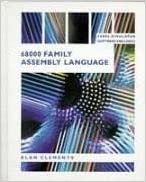






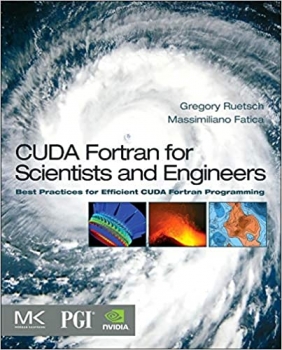


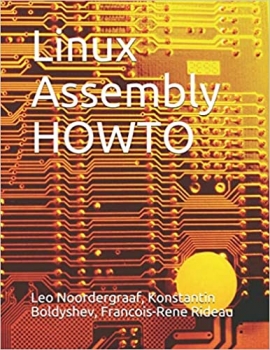
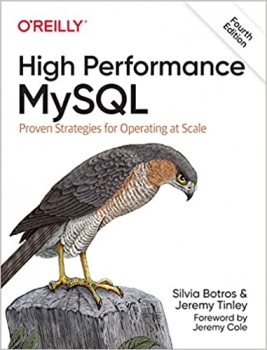




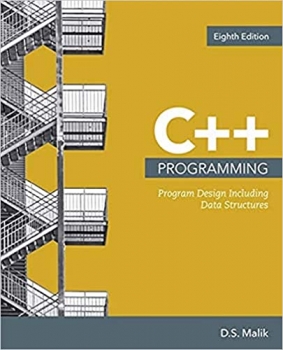











ارسال نظر درباره کتاب Introduction to RISC Assembly Language Programming 1st Edition